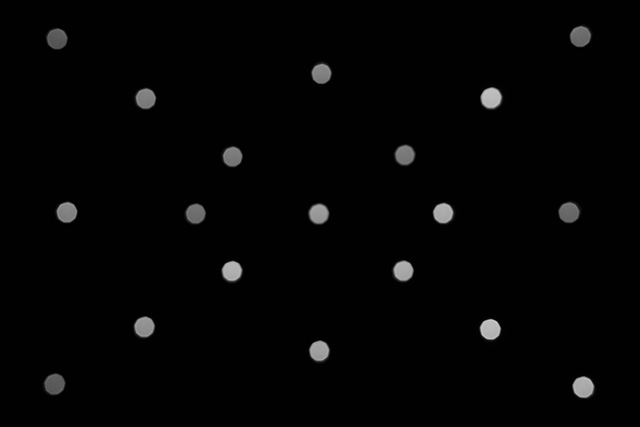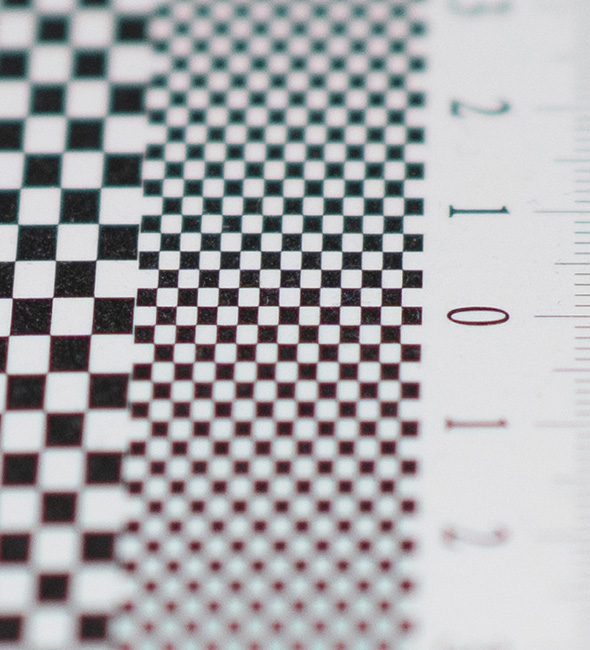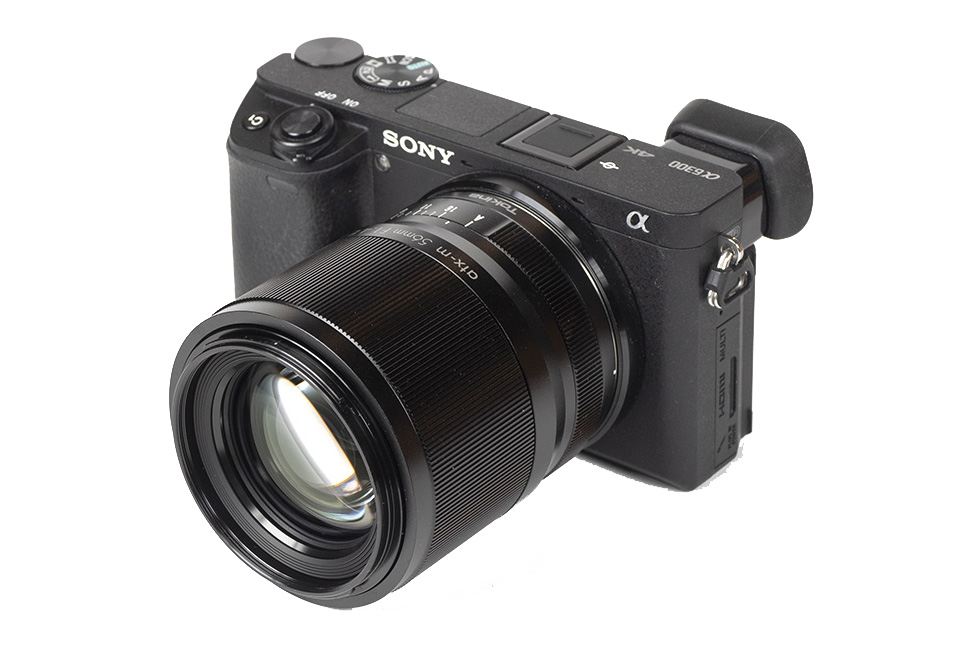Review by Klaus Schroiff, published January 2022
Introduction
Recently, we reviewed the Tokina atx-m 56mm f/1.4 X in Fujifilm X mount, but there’s also a variant in E-mount – correspondingly named the Tokina atx-m 56mm f/1.4 E. On APS-C cameras, the field-of-view is equivalent to “85mm” on full-format cameras. Thus it primarily targets the popular portrait-, still- and street-photography market. Priced at around 370EUR/$430USD, which is slightly more affordable than the X-mount version – probably a result of the stiffer competition in E-mount. As of the time of this review, we can count no less than 19 different standard prime lenses making it hard to find a niche for any new player in this segment.
The build quality of the Tokina atx-m 56mm f/1.4 E is on a very high level. The lens is made of metal, including the large focus ring and the dedicated, step-less aperture ring. This may not be ideal for photography purposes, but it’ll make the video folks happy. You can, of course, also control the aperture via the camera when setting the aperture ring to A-mode. The length of the lens remains constant throughout the focus range. A deep barrel-shaped lens hood – also made of metal – is provided.

The Tokina lens uses a stepping motor for auto-focusing. It’s not a speed demon in E-mount, but it is noiseless. Manual focusing works, as usual, by wire and is comparable to the implementation on modern Sony lenses. EXIF data is provided so it’s compatible with in-camera image stabilization. On the downside, there is no built-in correction profile thus you have to rely on the raw optical capabilities of the lens in JPEG mode. Unlike the Fujifilm X mount version, the 56mm f/1.4 E features a USB port for firmware update.
| Specifications | |
|---|---|
| Equivalent focal length (full-format) | “85mm” |
| Equivalent aperture (depth-of-field, full-format) | “f/2.1” |
| Optical construction | 10 elements in 9 groups inc. 1xSD |
| Number of aperture blades | 9 (rounded) |
| min. focus distance | 0.6m (max. magnification 1:10) |
| Dimensions | 65x72mm |
| Weight | 315g |
| Filter size | 52mm |
| Hood | barrel-shaped (bayonet mount, supplied) |
| Other features | – |
| Mounts | Fujifilm X, Sony E |
Distortion
As mentioned, the Tokina lens doesn’t include a built-in correction profile thus you have to live with the raw optical performance. Eventually, you may see a correction profile in your favorite RAW converter, but that’s not guaranteed, of course.
The lens produces a medium pincushion of ~1.4%. While not ideal, this remains within acceptable limits for most applications.

Vignetting
The vignetting characteristic of the Tokina atx-m 56mm f/1.4 E is quite heavy at f/1.4, but that’s to be expected from an f/1.4 lens. Stopped down to f/2 reduces this substantially, and it’s not a big deal anymore from f/2.8 onward.
Note: Unlike to the Fujifilm version, the raw vignetting is true to expectations here.

MTF (resolution)
The Tokina lens provides a solid performance on a 24-megapixel sensor, albeit not flawless. At f/1.4, the center performance is already excellent quality, although that’s probably not a show-stopper in this lens class. The overall contrast level is also somewhat reduced at this setting. Stopping down to f/2 also lifts the broader center to excellent levels. The center reaches its peak performance at f/2.8. The quality of the outer image field increases gradually with decent results at f/2.8 and the best (very sharp) quality at f/5.6 and f/8. Diffraction effects are setting in beyond (not shown).
The field curvature is marginal. The centering quality of the tested sample was good.
Please note that the MTF results are not directly comparable across the different systems!
Below is a simplified summary of the formal findings. The chart shows line widths per picture height (LW/PH) which can be taken as a measure for sharpness. If you want to know more about the MTF50 figures you may check out the corresponding Imatest Explanations.

Chromatic Aberrations (CAs)
Lateral CA (color shadows at the image borders) are well controlled with an average pixel width peaking just below 1px mark at the image borders at f/1.4 and lower CAs are medium aperture settings.

Bokeh
While sheer sharpness is certainly an important criterion, you rarely buy an ultra-fast lens for it alone. The primary application tends to be shallow depth-of-field photography, and bokeh quality should be a priority in your purchasing decision. So how does the Tokina lens perform in this respect?
Out-of-focus highlights are beautifully rendered in the image center with no outlining and a very smooth inner zone. A more edgy aperture shape is already visible at f/2, and it’s getting more obvious from f/2.8 onward.

The images below illustrate the deterioration of the out-of-focus highlights towards the image corners. The circular shape is kept across a very broad image field with only an obvious deterioration in the corners. The corner highlight shape improves when taking shots at f/2.8 other than becoming edgier.
The low vignetting figures, as well as the broad zone of circular highlights, suggest that the Tokina lens can cover more than just the APS-C image circle, although it’s probably not enough for full-frame.



The general rendition in the focus transition zones is smooth in the image background but somewhat more edgy in the foreground.

Bokeh Fringing (LoCA)
Bokeh fringing – also referred to as LoCAs – is a color fringing effect on the Z-axis. It shows up as purplish halos in front of the in-focus zone and greenish beyond. The effect is clearly visible at f/1.4 and f/2 and starts fading at f/2.8 – this is a typical behavior for a non-APO lens although somewhat higher than usual here.



Sample Images
Following our review of the Fujifilm mount version, the performance of the Tokina atx-m 56mm f/1.4 E isn't all that surprising anymore. It has its merits with a couple of caveats. In terms of sharpness, it can deliver where it counts the most for such a lens - in the broader image center. The borders and corners are soft at f/1.4 and f/2. Beyond, they are pretty decent and really sharp at medium aperture settings. Lateral CAs and image distortions are on a moderate level, albeit you can spot them in critical scenes. Vignetting can be obvious at f/1.4. The lens has no correction profile, so it'll require manual efforts if you want to fix this.
As far as the soft criteria are concerned, the bokeh quality is certainly a strength of this lens. Out-of-focus highlights are very clean at f/1.4 and remain circular except in the far corners. The general blur rendition is also smooth. On the downside, axial CAs (bokeh fringing) can be noticeable at large apertures. You may also stumble across purple fringing in difficult scenes with harsh contrast.
Thanks to an all-metal body, a smooth control ring, and internal focusing, the mechanical quality is surprisingly high. Unlike most E-mount lenses, it features a step-less aperture ring which can come in handy for video work. It doesn't feature any weather sealing, though. The AF speed is moderate but noiseless.
The most difficult aspect around the Tokina lens is not its performance but the sheer amount of competition that it faces in E-mount.
-
Optical Quality
-
Build Quality
-
Price / Performance


